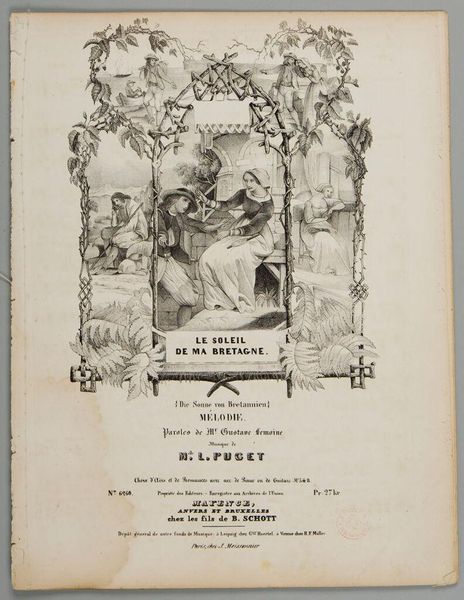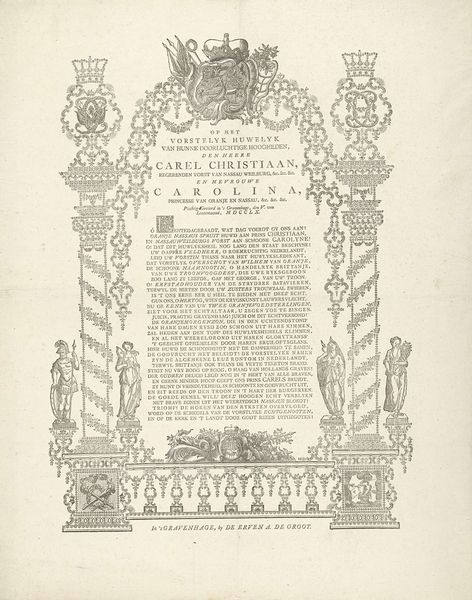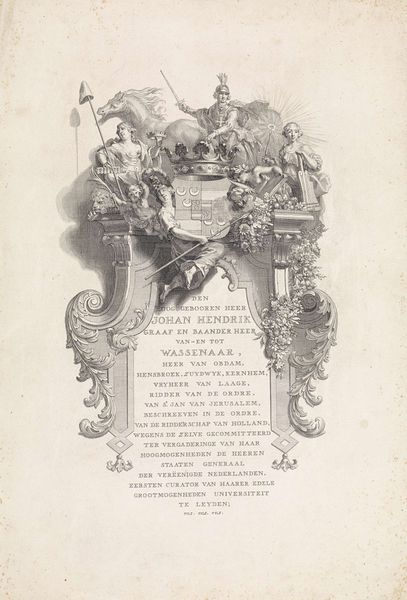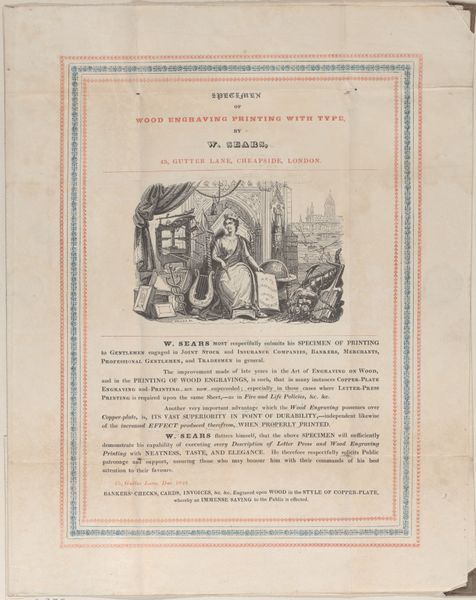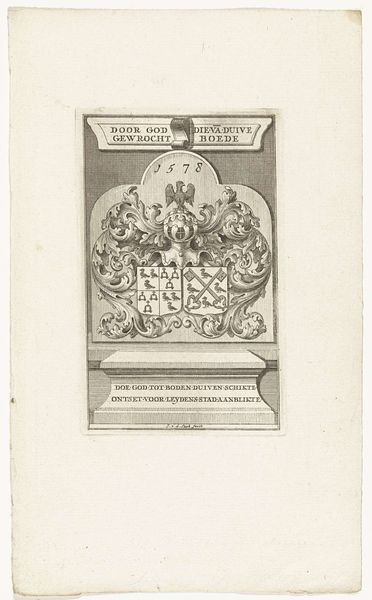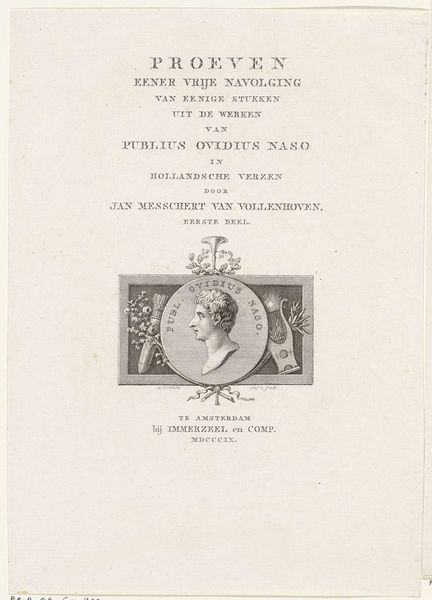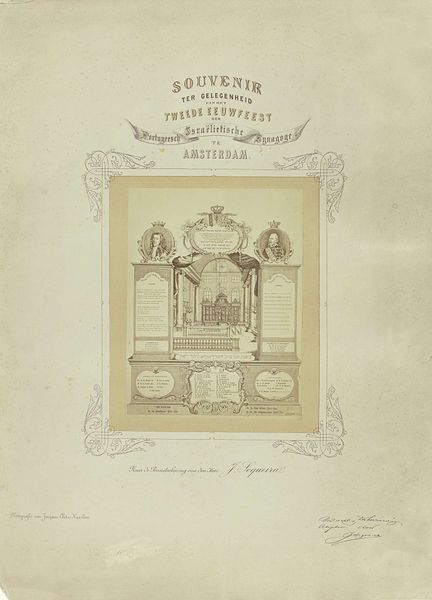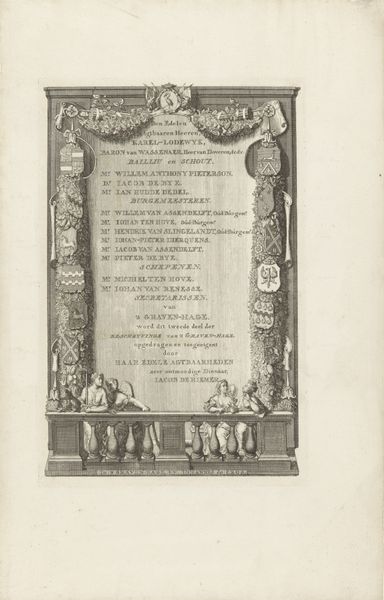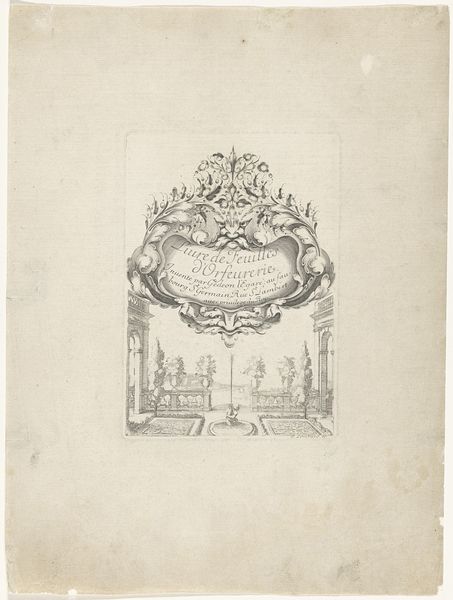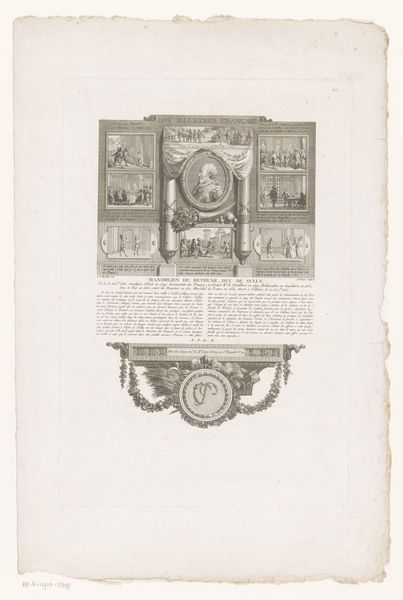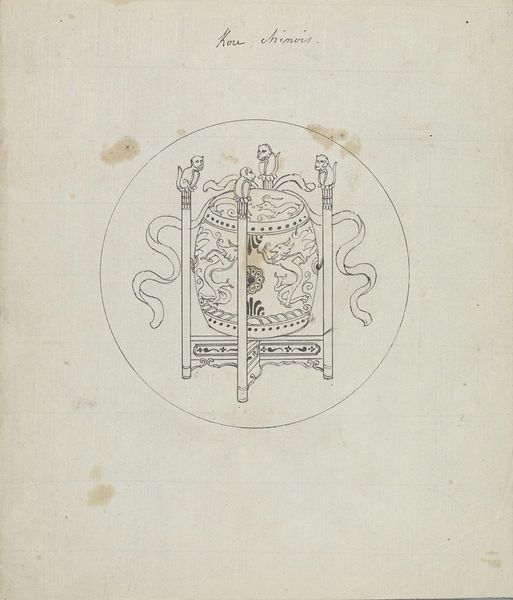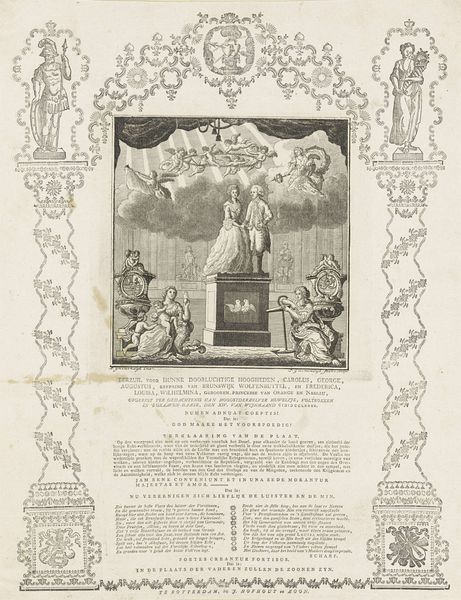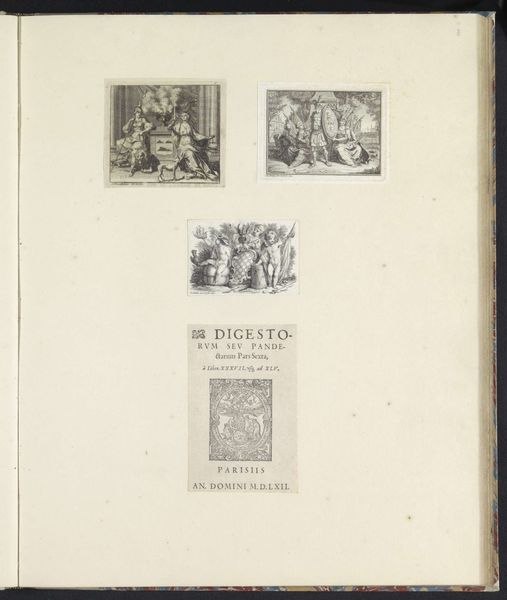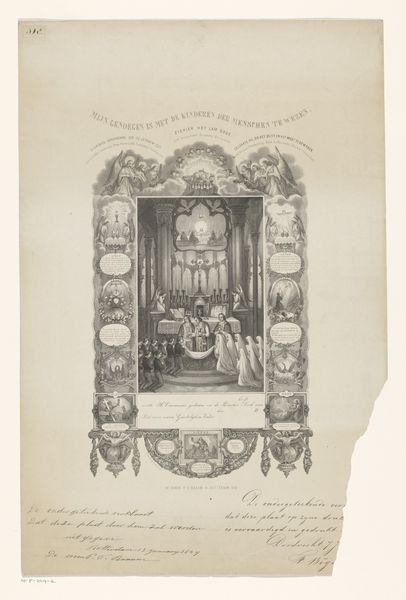
Titelpagina voor: Charles Dickens, De klok van meester Humphrey, 1840 1840
0:00
0:00
willembal
Rijksmuseum
drawing, ink, pen, engraving
#
drawing
#
quirky illustration
#
old engraving style
#
hand drawn type
#
figuration
#
personal sketchbook
#
ink
#
ink drawing experimentation
#
romanticism
#
pen-ink sketch
#
ink colored
#
pen work
#
sketchbook drawing
#
pen
#
sketchbook art
#
engraving
Dimensions: height 248 mm, width 154 mm
Copyright: Rijks Museum: Open Domain
Editor: This is the title page for Charles Dickens' "De Klok van Meester Humphrey," created in 1840. It’s a drawing done with pen and ink, even incorporating engraving, held at the Rijksmuseum. The illustration is incredibly quirky and imaginative. I'm curious about the figures erupting from the grandfather clock, what do you make of it all? Curator: It's fascinating how this image highlights the burgeoning public sphere of the 19th century. Consider the rise of literacy and affordable literature; Dickens' work, especially in serialized form, was shaping social consciousness. The clock becomes a symbolic portal, not just to time, but to stories and characters that directly influence and reflect the values of a society undergoing dramatic industrial and social change. What strikes you most about the presentation? Editor: The clock is definitely the centerpiece, but all those figures pouring out suggest storytelling and imagination unleashed! Do you think the artist was deliberately commenting on how fiction can "consume" or otherwise affect its readers? Curator: That's insightful! The clock itself represents order and structure, elements often challenged in Dickens' novels, right? Then, these figures pouring forth could indeed be interpreted as anxieties or excitement relating to the rise in consumption and creation of art. Think about how these accessible narratives fostered empathy across class lines. How might a piece like this influence public perception and engagement? Editor: I see now that the illustration isn't just decoration; it’s reflecting a real shift in society. Thanks, seeing it in the broader context of that period really deepened my understanding. Curator: Exactly. By viewing this piece in light of the social changes that supported art accessibility and fostered critical thought, one appreciates it not merely as an illustration, but as an instrument of cultural formation.
Comments
No comments
Be the first to comment and join the conversation on the ultimate creative platform.
